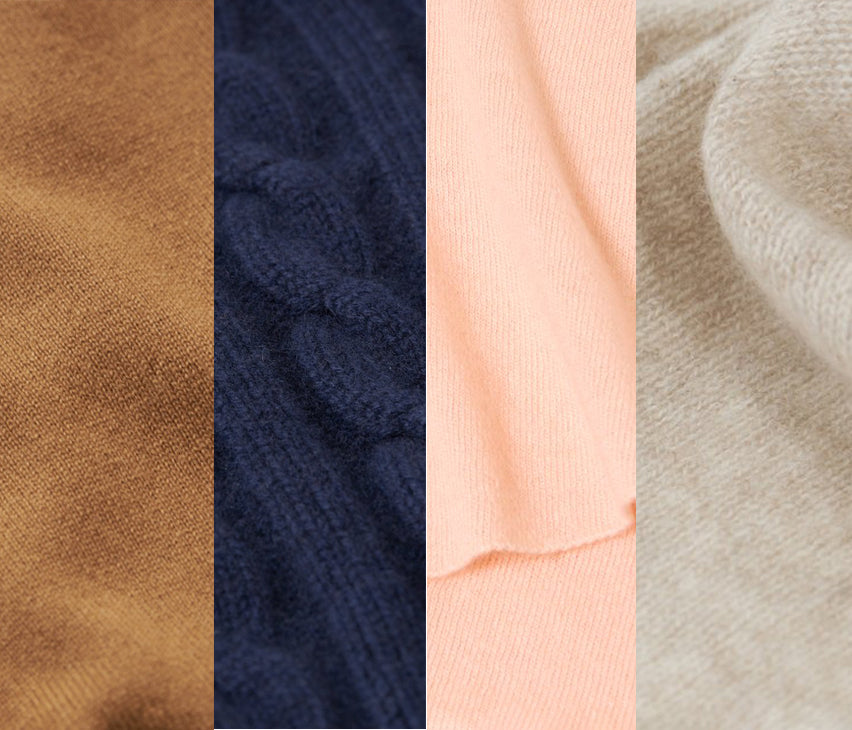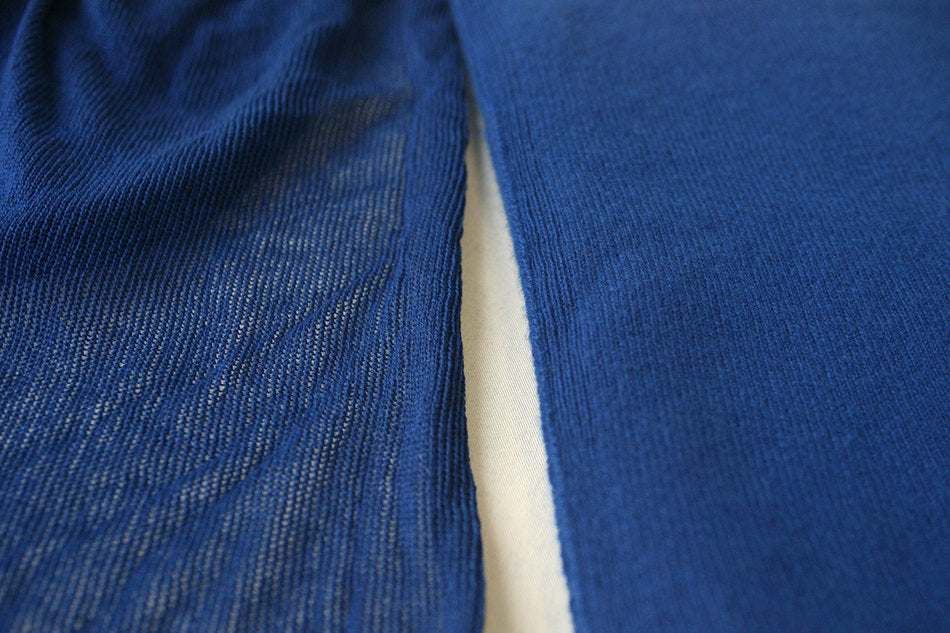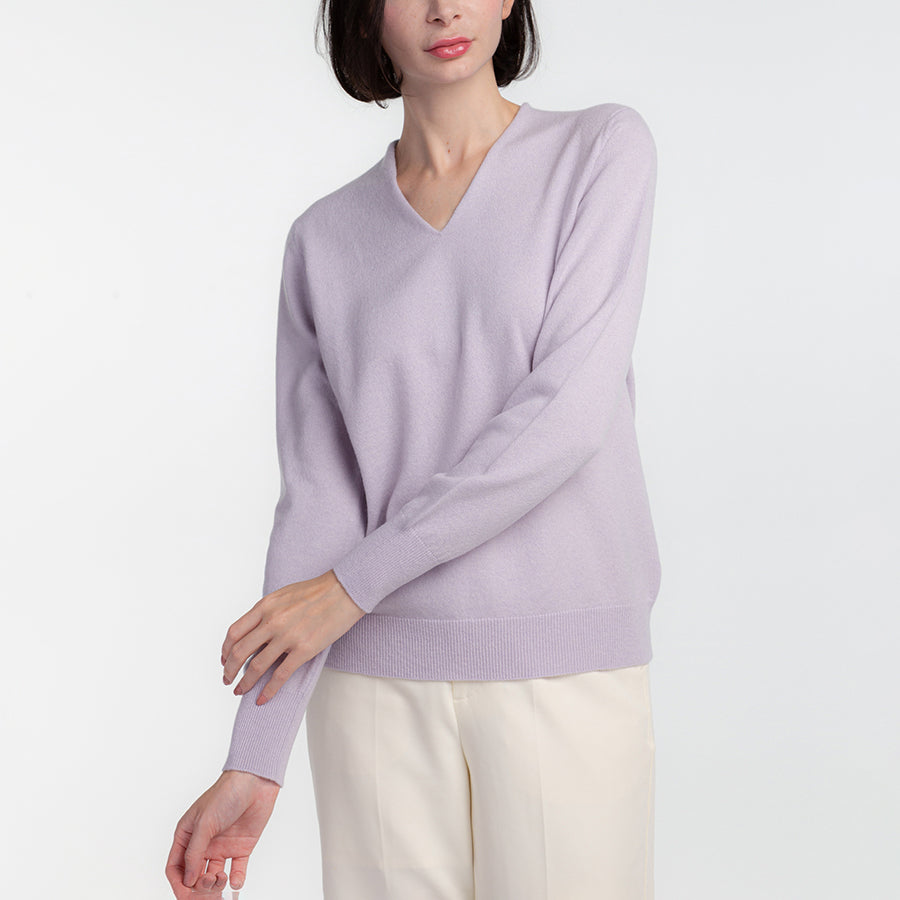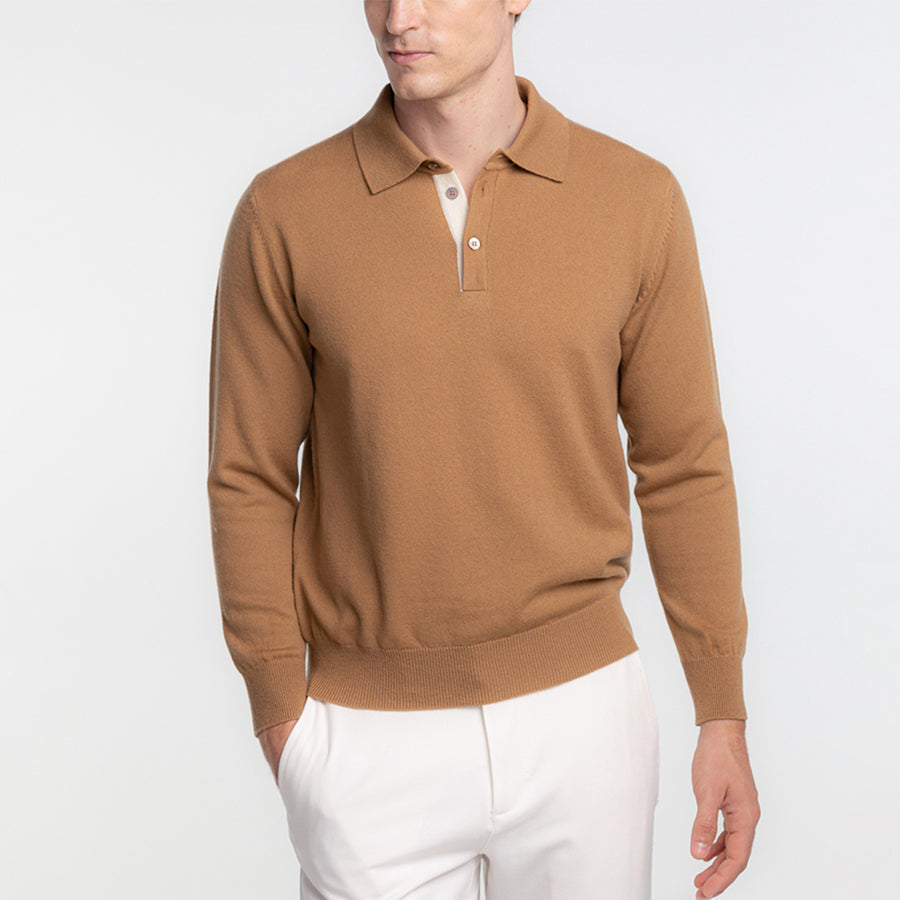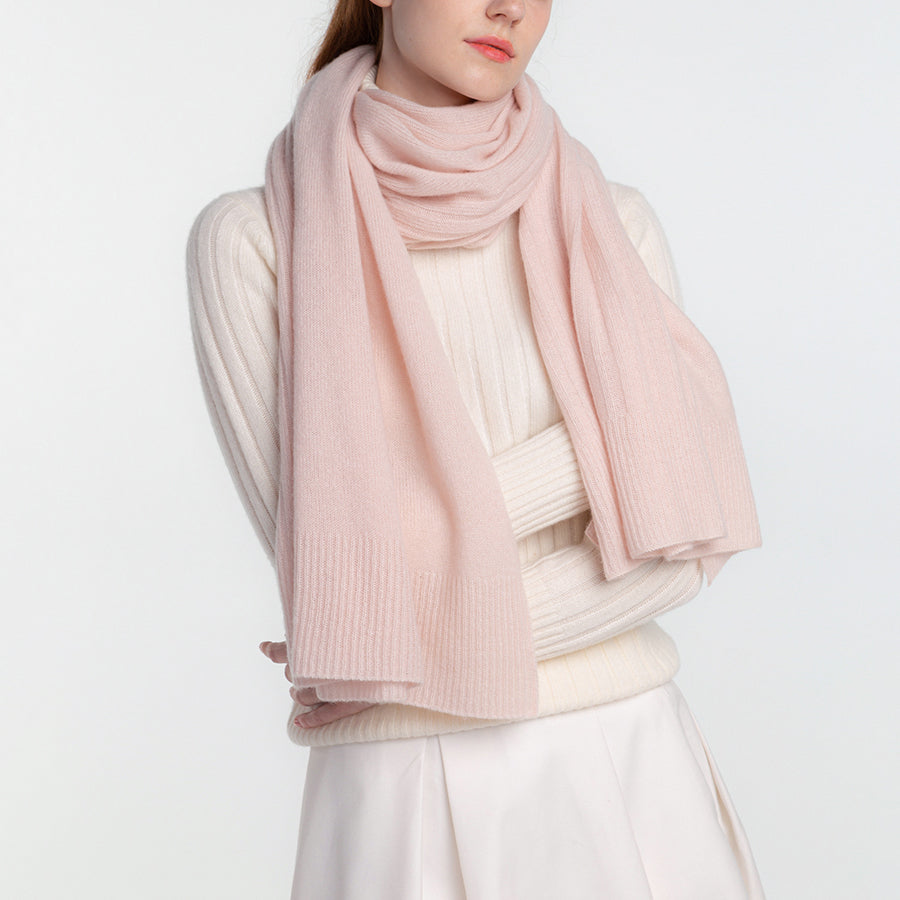The story of cashmere “dying”
A deep and elegant color that is dyed slowly and carefully.A comfortable and safe color.

cashmere and color
Color is a very important element in fashion, as it is said that ``color is number one, pattern is number two, and construction is number three.''
In fact, you can't think of fashion without color, and color is especially important for sweaters.
This time we will talk about "dying" to "color" it.
The dyeing craftsmen are working hard day and night to find out how to dye the fabric into the best color.
Selecting cashmere goats according to color

Beautiful coloring
1st grade raw cashmere wool
Raw cashmere wool is ranked into 9 grades based on ``thread thinness, fiber length, and impurity content'', but UTO uses cashmere yarn spun from Toyo Boseki's ``1st grade raw wool''. is.
" 1st grade raw cashmere wool" has extremely high whiteness (whiteness), and threads with high whiteness are characterized by increased color vibrancy and depth when dyed.
Also, there are individual differences among cashmere goats, and there are cashmere colors such as white, gray, and brown. Sometimes these hairs are used as they are, but most of the time they are dyed some kind of color.
①White

②Gray

③Brown

It's fine if the color comes off easily like wool, but cashmere wool is so delicate that if you remove the color and dye it, it will get damaged and lose its texture.
For this reason, for example, colors with low brightness can be dyed from ``brown'' or ``gray'' hair, but only ``white cashmere'' hair can be used for lighter colors such as white, saxophone, and pink.
By the way, UTO has many bright clear colors, so "white cashmere" is often used.

Rare bright cashmere color
When cashmere products began to be sold after the war, the colors were all low-brightness colors such as camel, gray, wine, navy blue, and black.
At that time, these colors were called cashmere colors, and were said to be ``bold and deep colors that are typical of cashmere.'' However, in reality, the threads that could be bought in Japan, where foreign currency was scarce, were brown cashmere or gray cashmere, and expensive white cashmere etc. The reality seems to be that it was bought by the West and never circulated.
Therefore, when I see UTO's bright and diverse colors, I am often surprised, saying, ``Cashmere can come in such beautiful colors.''
Consideration for texture and deep colors

top dyed
There are three types of fiber dyeing: top dyeing, thread dyeing, and product dyeing.
Fibers, not just cashmere, can be dyed in their raw state (top dyeing), in yarn (yarn dyeing), or after being made into products (product dyeing). Each dyeing method is different depending on the purpose.
UTO 's cashmere yarn is dyed using " top dyeing ".
Compared to "thread dyed" and "product dyed" threads, "top dyed" threads have better color retention and deeper hues.
It takes time and effort to complete the color, which increases costs and risks, but we are particular about ``top dyeing'' so that those who order can enjoy the color for a long time.
In addition, "top dyeing" is a dyeing method that is gentle on nature.
UTO is particular about "top dyeing" because it helps to reduce water consumption, reduce wastewater and pollution, which means keeping the natural environment cleaner.

Value the texture with high-risk “top dyeing”
For threads that cannot be re-dyed, the earlier they are dyed, the higher the risk. If you dye the cotton red using top dyeing, the thread will be red, and of course the product will also be red.
Yarn dyeing after one stage is much less risky than top dyeing.
The more you can attract and dye the colors that change rapidly depending on the trends, the less risk there is.If possible, you can make a sweater from unbleached material during the off-season and dye it once you know the color trends in the off-season, so you can grab a great chance. You can do it.
Benetton, an Italian manufacturer, has perfected this dream-like product dyeing process. This was the beginning of Benetton's great breakthrough. I think it was revolutionary.
However, with delicate cashmere, it is impossible to use such a bold method as the texture will be ruined.

Japan's advanced technology "Low temperature dyeing"
The basic method of dyeing is soaking in hot water containing dye. Although it varies depending on the color, a certain amount of temperature and time are required for the dye to penetrate into the fiber.
The degree of color retention is also called "fastness."
Generally, when trying to ``improve fastness'' it becomes necessary to ``increase the dyeing temperature.''
Higher dyeing temperatures have the advantage of ``faster and more uniform dyeing,'' but on the other hand, higher temperatures can damage the cashmere fibers and reduce their texture.
Additionally, this can lead to yarns that are difficult to knit and holes.

Fastness and texture are contradictory, as ``increasing the fastness'' so that ``the color does not fade'' and ``degrading the texture'' are contradictory, but Toyobo Kogyo, which provides yarn to UTO, In order to satisfy both of these requirements, we have developed a special method called " low temperature dyeing ".

"Low-temperature dyeing" maintains a soft texture
UTO 's cashmere yarn is dyed using a "low-temperature dyeing" technology originally developed by Toyo Boseki Kogyo in order to preserve the "soft feel" of cashmere as much as possible and make it a "thread with good color retention." .
"Dyeing slowly at low temperatures to ensure an even color."
This is an advanced dyeing technique based on many years of experience, and is highly acclaimed around the world.
Although careful control of time and color is required, this unique dyeing technique preserves the smooth texture of cashmere fibers and maintains high quality in terms of color retention and texture.

In this way, the quality of UTO is supported by the dyeing masters, but in reality, even with the best technology, there are subtle differences in texture depending on the color.
Of course, cashmere is incomparably softer than other materials even in dark colors such as black, but it is inevitably stiffer than other pastel-colored threads. Even sweaters with the same model number can have different textures depending on the color.
Color craftsmen continue to strive every day to create better colors and better textures, but there are still technical barriers that are difficult to overcome. .
But no matter what, black cashmere is always popular (lol)
A “deep hue” created by blending colors
Cashmere cotton is made using the highest grade cashmere wool, yarn dyeing, and low-temperature dyeing to bring out the maximum vibrancy and depth while maintaining its texture.
UTO's cashmere yarn is made from 5 to 10 colors of cashmere cotton that are "blended" into a single color.

For example, UTO 's color "Royal Blue" is a blend of five colors of blue.
In addition, in the case of "medium gray", black, white, light beige, light purple, and blue are blended.
Blue is hard to notice, but it's like a secret ingredient that adds depth to the color.
By blending colors, you can add depth to your colors and make even pale pastels look more intense.

Blending also "significantly stabilizes color changes."
Color stability leads to a sense of security when it comes to colors, such as when you want to repeat the same color.
UTO always uses the same cashmere thread and color, so ``color stability'' is a very important element in order for you to feel safe with UTO's cashmere knits.






